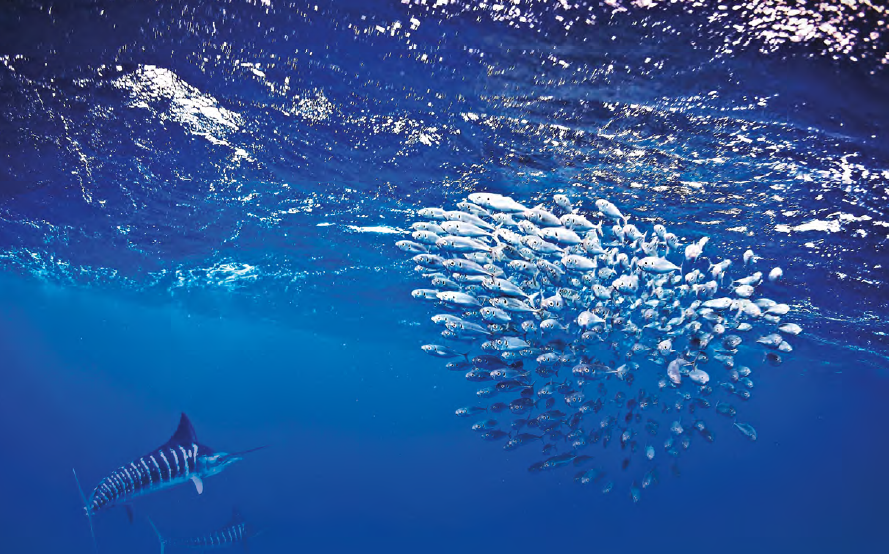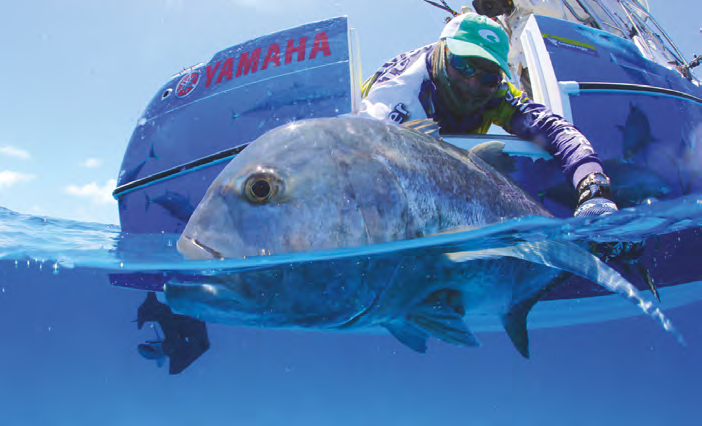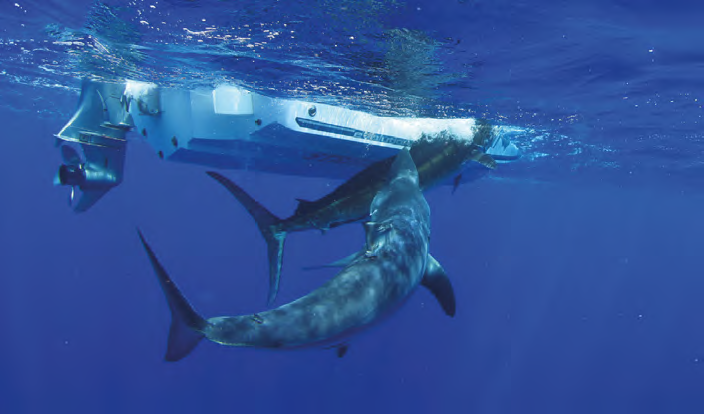
I have fished all my life, but over the years it seems the more I fish the less I want to just catch them. Instead, all I want to do is photograph them to show off how beautiful they are. In the early days it was all about winding them in and showing off the biggest fish, but now the focus is purely centred on getting the shot and then sharing the images and video with everyone in magazines like this. I have to admit I love snapping shots and most importantly it is becoming a vital role to educate the masses on how exciting and, dare I say, how recreational fishing is a sustainable healthy sport. More importantly, though, simply observing I am learning so much more about the fish and their behaviours.
My passion for photography came from the fact that I wanted to share the true essence of what I experience on the water, be it a high-flying billfish or the brilliantly coloured coral trout. However, I quickly discovered that once you remove a fish from the water they lose those magic colours all too quickly giving me a very small window. It was at this point I realised the only way to get those shots was to jump in with them.
Little did I realise that taking the plunge would open me up to a whole new world of discovery. Seeing fish in their natural environment suddenly gave me a whole new appreciation of how they behave and instantly improved my fishing. Over the years I have been spending more and more time in the water and along the way I’ve witnessed some amazing things – from huge schools of tuna, free swimming marlin to sharks and the humble old flathead. However, some of the most spectacular stuff has been the predatorprey interaction, especially with bait balls.
The first time I jumped in on bait balling striped marlin was a real eye opener. Hitting the water I was greeted by more than a dozen lit up marlin that almost effortlessly held the terrified bait school tight against the surface. There was no wild feeding frenzy, instead the fish worked together and snapped individual baits that tried to escape. A bait pitched out beside the action was almost instantly pounced on, while a bait thrown into the centre of the bait simply hid in there and wouldn’t get eaten. Interestingly, the marlin were totally unfazed by my presence, in fact, I am almost positive they were sniggering to each other about the big fat pink walrus.
It was a slightly different scenario a few years back when I encountered a full-on feeding frenzy that had dolphins, seals and marlin, along with sharks – heaps of sharks – working the bait. It looked chaotic from the surface but the footage actually revealed that everything was highly organised and there was a distinct pecking order in place. What I did notice was that the biggest fish always dominate and it doesn’t seem to matter whether it’s billfish or sharks, size is everything underwater. In this case, with multiple predators attacking the bait, the marlin tended to stay around the fringes, while the sharks and seals took centre stage, often working in unison. Fishing in this scenario it would be better to work the outer edges instead of right on top of the main action.
Speaking of dolphins, I had a memorable encounter off Sydney, bumping into a massive bait ball being hammered by the dolphins. Pulling up the bait took cover under the hull and I took the opportunity to slip in. Within seconds I found myself as part of the action and not simply the onlooker I had planned to be. The bait school whirl wound tightly around me and I suddenly understood the term ‘packed in like a sardine’!
The dolphins didn’t seem to mind my presence at all and bubble netted the bait, which was amazing to see first hand.

What I found really interesting was that apart from a lone seal there were no other predators involved, not even sharks. Yet, just 100 metres away, there were boats catching kingfish non-stop. The kings, who could have been potential prey for the dolphins and should have shut down [what they were doing], were snapping their heads off. Mind you, by the same token, they weren’t exploiting the balled-up bait either, which means that we still have a long way to go to understand the dynamics of predator-prey interaction in the aquatic world.
One point that is well worth mentioning is how fish behave around different fishing leaders. It is quite obvious that most predators can see the leader and realise that the bait or lure isn’t quite right. However, in some cases they still see it as an opportunity to take advantage of and will still eat it. I guess the reason behind this is that predators don’t have the luxury to just pick and choose what they are going to have for dinner as we do and need to grab it first then decide. Even if it looks wrong they will still snap at it and if they don’t like it they can spit it out.
Of course, this is where the hook comes into play and we hook up. If there is one thing I can take away from this it’s that attention to detail is still a vital part of making you a better fisherman. It’s those little things that really make your presentation perfect – fooling even the smartest of fish. In the case of a bait ball, increased competition between predators will see you get more bites but, still, the angler that goes that extra mile to make everything perfect will always catch more fish irrespective of whether it’s marlin offshore or salmon on the beach.

Category: Unknown
Written: Fri 01 July 2016
Printed: July, 2016
Published By:
AL MCGLASHAN